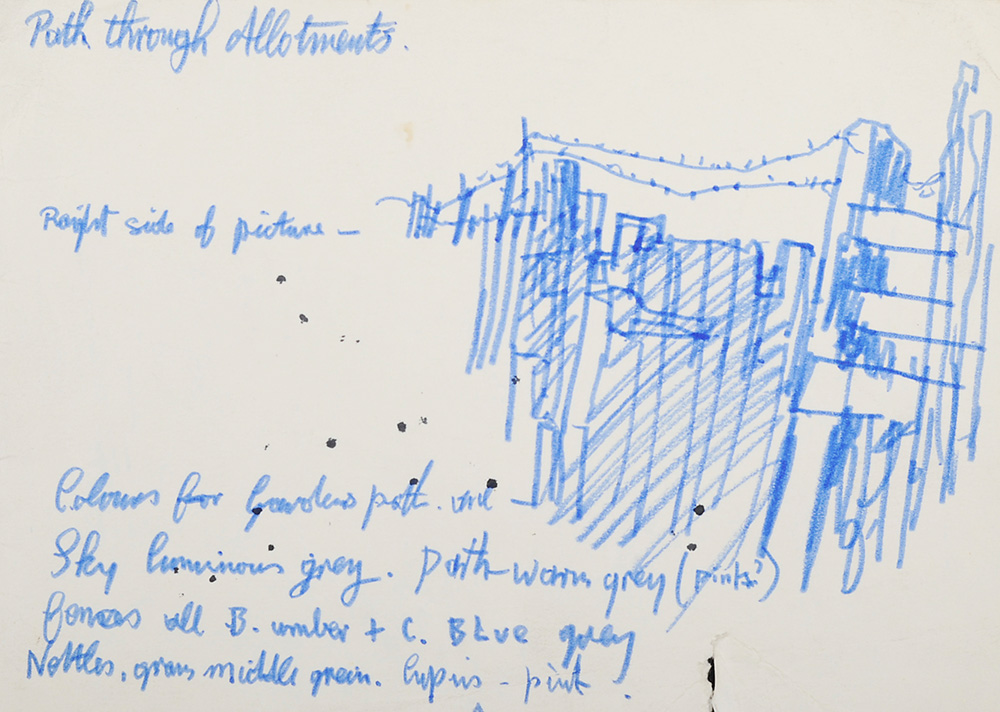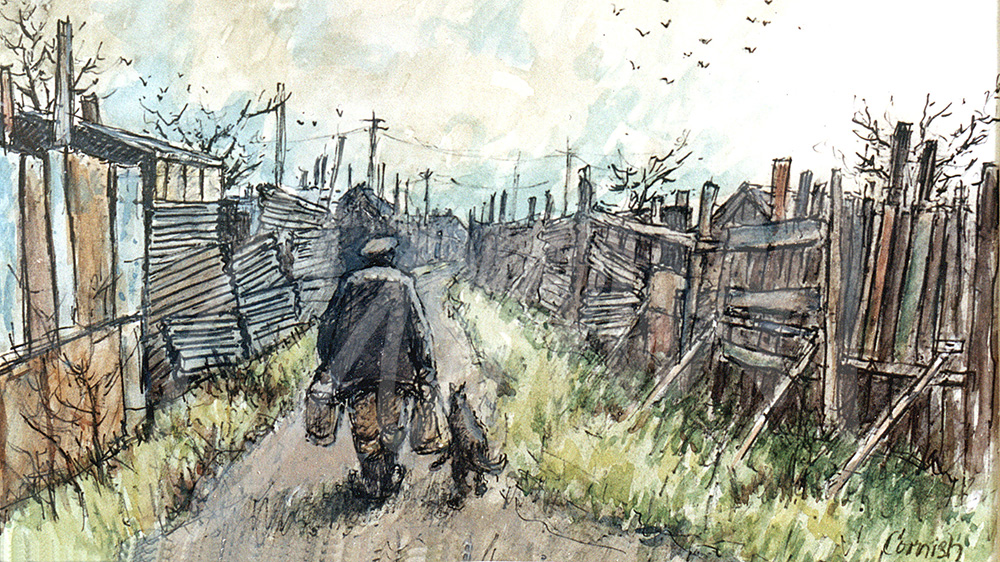
Latest News

Allotments and Pigeon Cree
Today in County Durham there are 159 allotment sites thriving in towns and villages continuing a tradition which began in the 19th century and originally created for the working man to provide additional food throughout different seasons. Looking after an allotment became a worthwhile activity, which was very much part of the cultural landscape of mining communities.
Growing vegetables also became competitive in the Autumn during the annual ‘Leek Shows’ where prizes were awarded for the biggest and best specimens in each category. This annual tradition remains at the heart of many communities today and the seeds obtained from prize-winning vegetables are highly valued. Sabotage sometimes occurred between rival growers and examples of ‘Leek slashing’ are legendary.
Cornish was advised at an early age to paint ‘the things around him’ and it was inevitable that with so many allotments and pigeon crees in the Spennymoor area they could hardly fail to become a subject of interest. The daily walk to and from Dean and Chapter Colliery passed by the allotments in Low Spennymoor, and conversations with his ‘marras’ would reinforce the interest. The local ‘Leek Shows’ never appeared as a subject in his work but posters advertising ‘Leek Shows’ sometimes appeared in his bar scenes.
During the research phase for the 1950s town by staff at Beamish Museum Sarah Cornish recalled the annual occasions in Bishops Close Street when a pig was slaughtered at one of the local allotments and the carcase shared amongst families in the street, such was the value of sharing in the community. Other livestock were also kept in some allotments including poultry and of course, pigeons. Back yards were also utilised and Cornish’s father kept Zebra Finches, Budgerigars and Canaries in a special cree in the backyard of his house a few doors away from Cornish’s home in number 38 Bishops Close Street.
Pigeon crees were also very much part of the allotments as an additional past-time and two of the images record that moment in time when pigeons ‘homed in’ on the cree! One of the images, included is The Holy Innocence Church in Low Sennymoor which features in all of the pictures of Salvin Street, with allotments at the bottom in front of the church. Basically it is a detailed study usually incorporated into the larger street scenes of Salvin Street.
Keeping allotments remains embedded in the cultural landscape, not only in County Durham but also further afield as part of our national heritage. In England there are over 7,000 sites with 245,000 plots, and in Spennymoor the tradition continues to flourish on 16 sites with 655 allotment holders.
Cornish often referred to his ‘disappearing world’ but he would have been delighted that the interest in allotments has been sustained during a period of significant social upheaval. The images featured can be enjoyed in Behind The Scenes: The Norman Cornish Sketchbooks, available via the website www.normancornish.com





